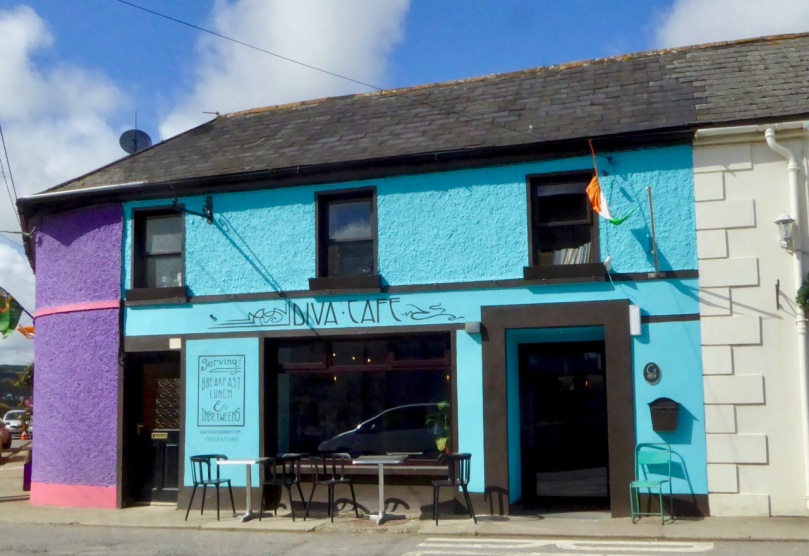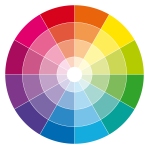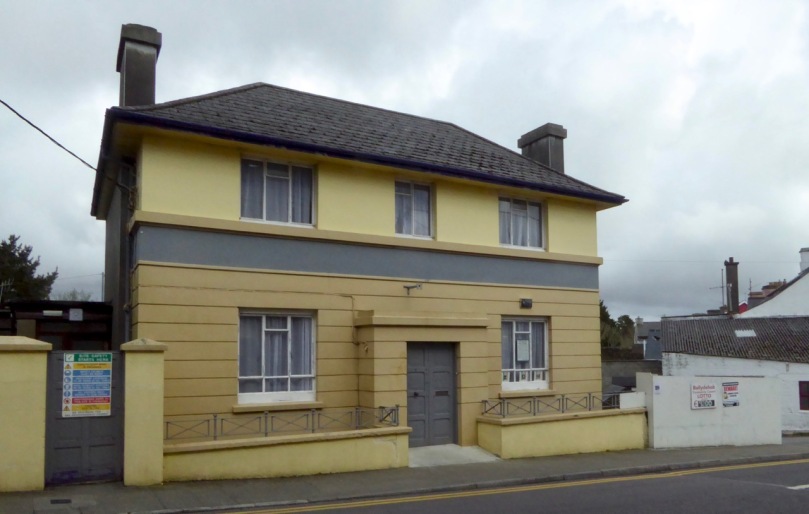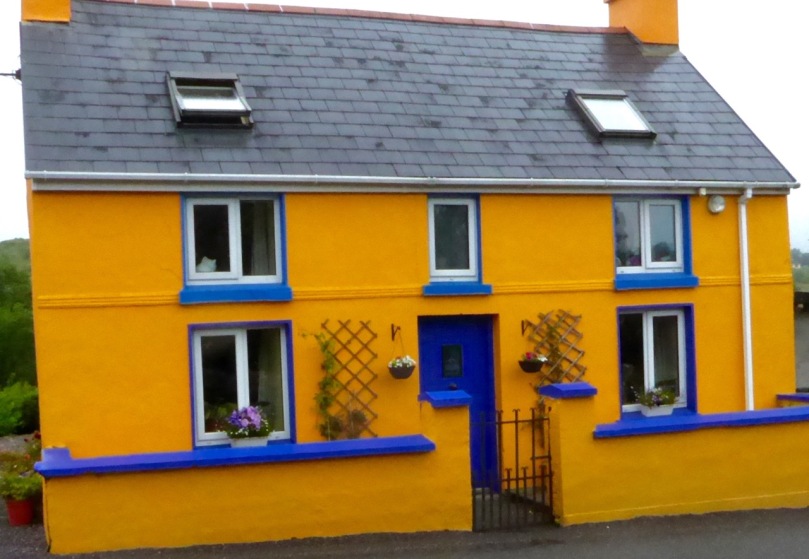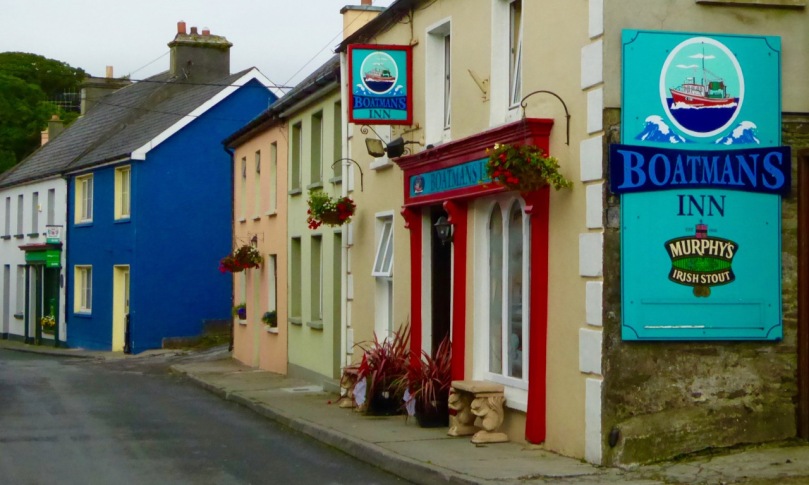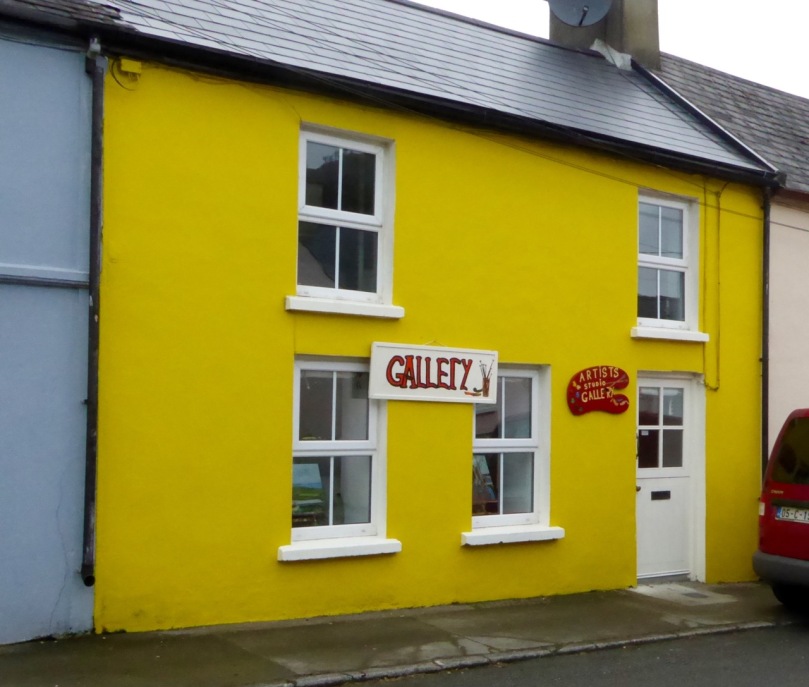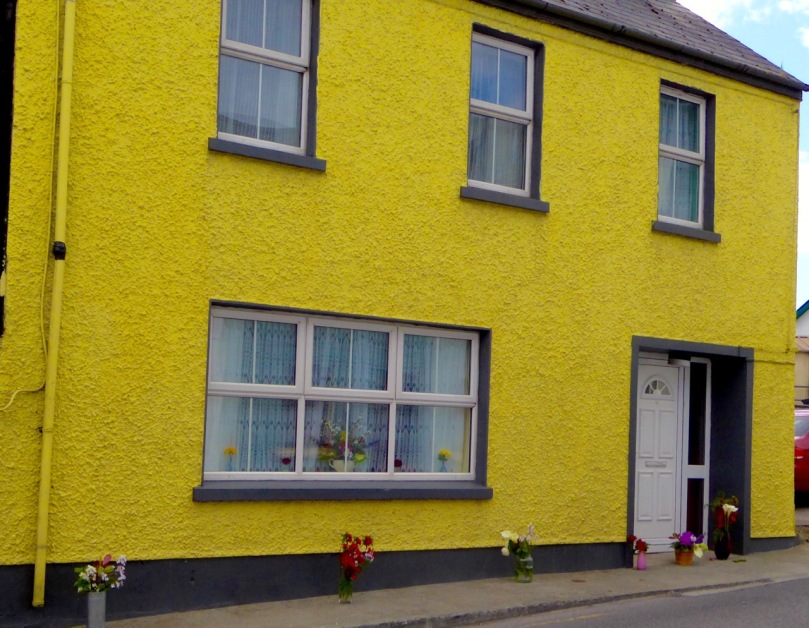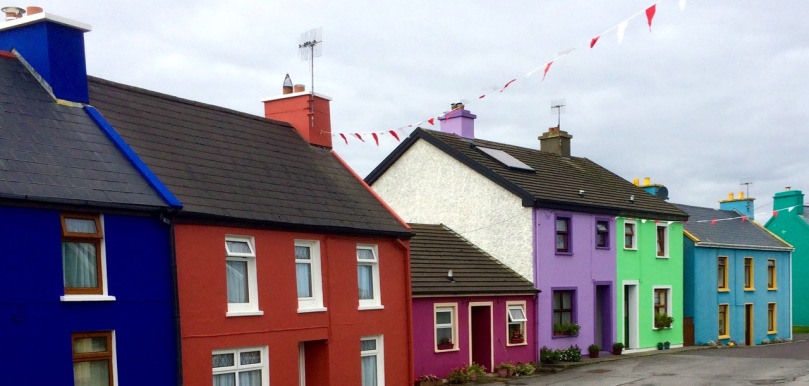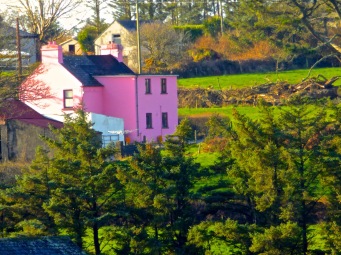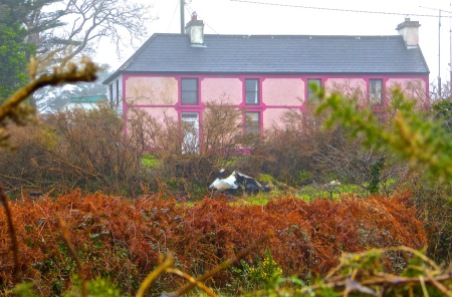In this series on Ireland’s colourful buildings, we started off with purple and pink and proceeded through the colour wheel to the oranges and yellows and now we have arrived back on the cool side of the spectrum – the blues and greens. The Diva Cafe in Ballinspittle (above) has black trim that does nothing to tone down its exuberance, and it marries beautifully with the purple and pinks beside it, which were highlighted in our first post on this series.
We left off the last post with a couple of lime greens, so here’s another, from Kinsale (above) to get us back in the swing of things.
A bright green and a blue green are a great combination beside the sea – this house is at Dunmanus, on The Mizen
Blues and greens are the colours of the sky and the fields, so they don’t pop as much as the pinks and the oranges. In fact they can be quite subtle, when used in tones that blend in with their surroundings.
I love these two farmhouses, the first near Mount Kidd and the second near Coppeen
But in village streets, and especially when combined with the other colours of the streetscape, they can be as cheerful and arresting as the stronger hues around them.
 Eyeries (top) and Kenmare (bottom)
Eyeries (top) and Kenmare (bottom)
There are shades of blue and green that people argue over – one will call it blue and another green.
The fabulous Bridge House in Skibbereen – blue or green?
Those are the teals, ceruleans and turquoises, and St Patrick’s Blue, which is the colour of the Aer Lingus uniforms.
Finn’s Table in Kinsale, La Jolie Brise in Baltimore and a lovely brick and teal combo in North Cork
O’Sullivan’s butcher shop in Ballydehob has been closed for years, but it still retails its welcoming colours and graphics
True blues vary from the strong dark ultramarines and navy blues through the denims, duck eggs, periwinkles, sky blues and on to the paler shades and baby blues.
The first house is in Baltimore, the one underneath it was glimpsed somewhere on our travels
Blue matches well with other colours and is often used in combination. Some of the nicest buildings we’ve seen use blue with another colour to great effect.
Three wonderful buildings that use blue in combination with orange tones – a bank in Youghal, a hardware store in Bantry and our own Budd’s Restaurant in Ballydehob (with Rosies pub for good measure)
Yellow trim is a tried and true favourite
 It might be one of the smallest houses I’ve seen, but it stands out when painted in blue
It might be one of the smallest houses I’ve seen, but it stands out when painted in blue
 Blues and greens in Kilbrittain
Blues and greens in Kilbrittain
 This one near Castle Donovan uses a strong blue cleverly as both a main and a trim colour
This one near Castle Donovan uses a strong blue cleverly as both a main and a trim colour
 I’ve decided to end this series with this photograph of two side-by-side buildings in Adrigole on the Beara Peninsula. The juxtaposition of the strong green and the vivid pink proves that when it comes to colour, anything can work!
I’ve decided to end this series with this photograph of two side-by-side buildings in Adrigole on the Beara Peninsula. The juxtaposition of the strong green and the vivid pink proves that when it comes to colour, anything can work!
